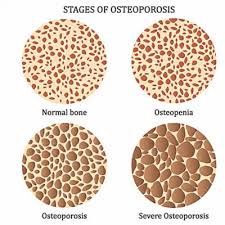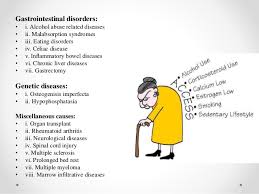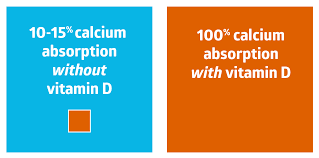
Bone is a living tissue that constantly regenerates. Complex processes throughout the body cause new bone to be laid down as old, weak bone is removed - this maintains strong bones. Until around age 30, we normally build more healthy bone than we lose, but after our 30’s, bone tissue naturally starts to decrease. With age and reduced Oestrogen levels, particularly when the menopause occurs before the age of 45, there is an increased risk of progressive loss of bone strength leading to bone thinning and fragility (Osteoporosis). Although bone loss occurs in both women and men, the loss is more rapid and is more common in women.
Approximately 10% of a women’s bone mass is lost in the first 5 years of menopause.
Bone thinning itself does not cause any symptoms, with Osteoporosis being known as the “silent disease”. The first warning sign can be a fracture after a simple fall or bump. A hump to the upper back is a common sign in longstanding Osteoporosis as deformity from weak bones occurs.
 is estimated that by the age of 70 that one third to one half of women will have had an Osteoporosis related fracture. Fractures commonly occur in the wrist, spine and hip. Such fractures can significantly reduce quality of life, independence and, in the case of hip fracture, can shorten life. Development of Osteoporosis in women is influenced by the strength of the bones before the menopause (peak bone mass being achieved in the twenties and being influenced by weight bearing exercise, diet, adequate in calcium and vitamin D and by genetic influences), the age of menopause and the rate of bone loss with menopause and age.
is estimated that by the age of 70 that one third to one half of women will have had an Osteoporosis related fracture. Fractures commonly occur in the wrist, spine and hip. Such fractures can significantly reduce quality of life, independence and, in the case of hip fracture, can shorten life. Development of Osteoporosis in women is influenced by the strength of the bones before the menopause (peak bone mass being achieved in the twenties and being influenced by weight bearing exercise, diet, adequate in calcium and vitamin D and by genetic influences), the age of menopause and the rate of bone loss with menopause and age.
Risk factors for osteoporosis include:
- Breaking a bone after a simple fall or bump
- Premature (before age 40) or early (before age 45) menopause
- Family history of osteoporosis
- Maternal and paternal history of hip fracture
- Long term (more than 3 months) or high dose use of steroids
- Smoking
- Excess alcohol intake
- Poor dietary intake of calcium
- Lack of weight bearing exercise
- Lack of sunlight - vitamin D deficiency
General factors which can therefore help to reduce the risk of osteoporosis include:

- Stop smoking
- Limit alcohol intake (keeping below 14 units per week)
- Avoid excess caffeine by limiting tea / coffee / fizzy drinks
- Take regular weight bearing exercise, such as walking
- Have a healthy, varied, well balanced diet which is rich in calcium, dairy products, green leafy vegetables and oily fish
Check dietary Calcium intake is sufficient here with this easy to use calculator
HRT can help to prevent bone loss and reduce the risk of fracture and is particularly useful for prevention of Osteoporosis in women who have had an early menopause and have menopausal symptoms.
Further information about Osteoporosis:
